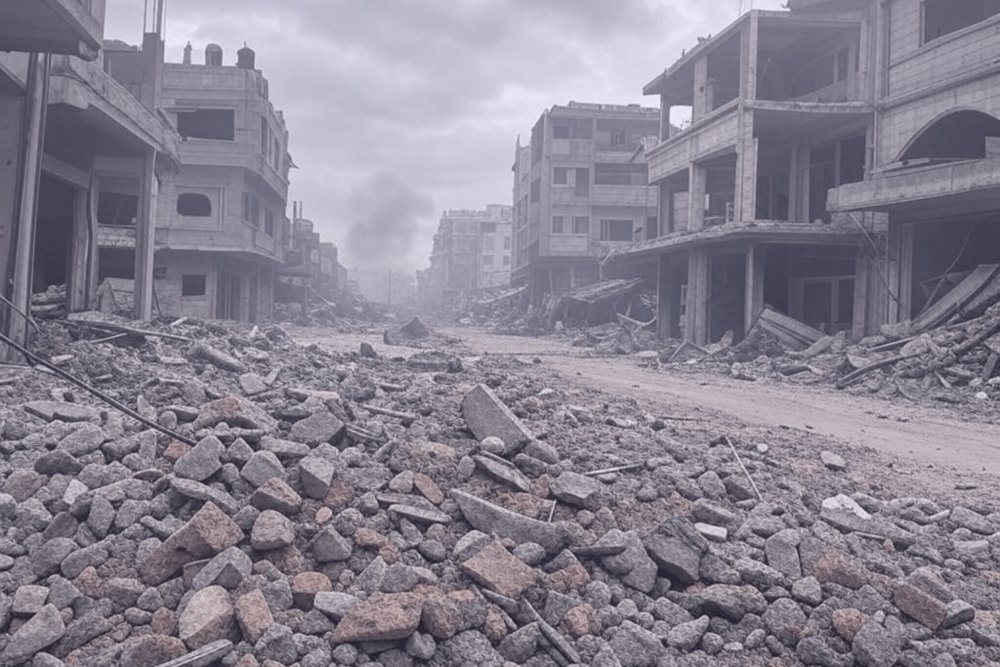
Can the Gaza Strip fully recover from the latest war? Despite Palestinian claims of “victory,” Gaza’s future seems largely hopeless. Here are some factors to consider:
Massive destruction: The 2023-2025 Gaza War has left the enclave in ruins, with unprecedented levels of destruction that dwarf the damage from past conflicts. Entire urban centers, which Hamas turned into massive terror hubs, have been reduced to rubble.
To make matters worse, much of Gaza’s critical infrastructure is either ravaged or non-functional. Moreover, a significant portion of buildings in the Strip have been damaged or destroyed, leaving hundreds of thousands of displaced residents within the strip.
Huge cleanup operation: Before even considering the daunting task of reconstruction, Gaza faces the challenge of clearing an enormous volume of rubble. Cleanup efforts of this magnitude are not just labor-intensive but also time-consuming.
Similar projects in other war-torn areas have taken years, even with international support. To complicate this task, Gaza will need a large inflow of heavy machinery, proper logistics, and external funding.
The rubble removal itself presents logistical and safety challenges. Many areas remain inaccessible, and unexploded munitions pose a constant danger. Hamas also stored large quantities of explosives in residential areas, further complicating cleanup efforts.
High cost, no funding: Preliminary estimates suggest that rebuilding Gaza will require tens of billions of dollars, with the price tag possibly as high as $80B. Gaza itself, a poor entity that mostly specialized in building terror tunnels and weapons, is incapable of footing the bill.
However, international donors have expressed limited willingness to commit to another round of reconstruction. Many have grown tired of funding projects that are repeatedly destroyed in subsequent conflicts.
Without substantial changes on the ground, including governance and security arrangements, potential donors see little incentive to waste more money on a doomed project.
The Hamas curse: At the heart of Gaza’s grim future lies its political reality. Hamas is widely regarded as a major obstacle to long-term stability and development. Its rule has been characterized by violent authoritarianism, economic mismanagement, and a focus on building a terror army.
As long as Hamas remains in control, the prospect of sustained quiet and reconstruction remains slim. A devastated Hamas still clings to power in Gaza, but is likely to face Israeli preemptive strikes and retaliatory operations. [here’s more on Israel’s strategy to neutralize the Gaza terror base]
Overall, the presence of Hamas not only hinders recovery efforts but also deters international actors from engaging in Gaza’s reconstruction. To flourish, Gaza would need to be free of Hamas.
Escaping Gaza: In the absence of meaningful change, it is likely that many Gazans will seek to emigrate. Years of economic hardship and now the wide-scale destruction in the area have left many desperate to leave.
An estimated 100,000 Gazans have already left during the war, and many more are eager to join them. But restrictions on leaving Gaza and a lack of pathways to asylum make large-scale emigration difficult for now.
However, the Trump Administration is working on some relocation schemes, which could dramatically change Gaza’s demography moving forward.
In the bottom line, Gaza’s outlook is bleak as it faces a crisis of staggering proportions. Without a clear plan for reconstruction and a fundamental shift in the political and security landscape, the enclave faces a future marked by instability, violence and despair.
At this point, the international community appears fatigued by Gaza’s cyclical crises and unwilling to engage in the huge task of rebuilding this devastated war zone. Without drastic changes, Gaza’s recovery may remain a theoretical concept that never fully materializes.


